#tridacna
Explore tagged Tumblr posts
Text

100 Days of Sea Creatures Day 78 - Giant Clam (Tridacna maxima)
#artists on tumblr#artists on instagram#drawing challenge#sea creature art#drawing daily#sea creatures#Tridacna#giant clam#coral reef#deep sea creatures
2 notes
·
View notes
Text

Tridacna squamosa shell carved with a human head (c.630BC-580BC)
374 notes
·
View notes
Text

Ballpoint in sketchbook.
Tridacna Squamosa
#art#artists on tumblr#eatsleepdraw#drawing#illustration#sketchbook#sjaak kaashoek#ballpoint#sketch#drawings#shell#tridacna squamosa#nature
22 notes
·
View notes
Photo
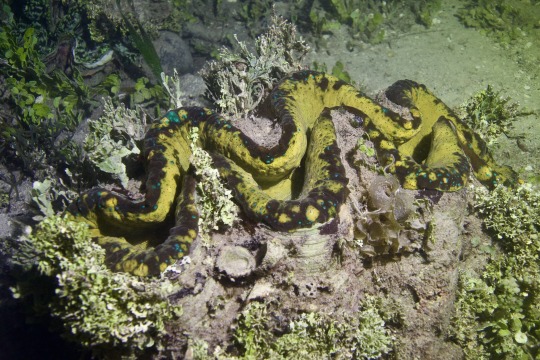
BLEACHING REDUCE THE REPRODUCTION OF GIANT CLAMS
As sea warms, corals expel zooxanthellaes, their symbiotic algae, turning white, in a process called bleaching, but others animals with symbiotic algae, as giant clams, can be affected by bleanching too. Bleaching caused by the increase in seawater temperatures causes massive mortalities in giant clams, as they rely in these simbiotic algaes, wich provide them by the majority of its food source. However, how bleaching directly affects the reproductive performance of giant clams is, to date, unknown.
Researchers examined the direct impacts of bleaching on the reproduction of the giant clam Tridacna gigas between 2020 and 2021 in the Philippines, and found out that bleaching can affect their reproduction. Bleaching reduces the number of eggs giant clams produce. The increasing frequency and intensity of bleaching due to thermal stress can lower the reproductive potential of giant clams and likely other zooxanthellate organisms, resulting in reduced recruitment and population decline.
Photo iNaturalist user Bird Explorers
Reference: Sayco et al., 2023. Bleaching reduces reproduction in the giant clam Tridacna gigas. Marine Ecology Progress Series.
#Tridacna gigas#bleach#bleaching#science#scienceblr#sciblr#marine science#marine biology#animals#pacific#biology#climate change#global warming
16 notes
·
View notes
Text
There is currently a fad to provide aquariums containing photosynthetic coral holobionts - those corals and anemones harboring photosynthetic dinoflagellates, within their own tissues - with lighting regimes leaning heavily towards the blue wavelength. Many people, for I am not alone in this, dislike the aesthetic created by such lighting, and we think that it obscures details when we are trying to identify objects in the aquarium.
As it happens, the algal symbionts do respond the best to blue and green wavelengths of light. But this alone doesn't explain the aesthetic problem, since our human vision is best attuned to the green wavelengths, though admittedly at the yellowish end of the green light spectrum, rather than the blue. In suboptimal, low light conditions, our eyesight adjusts to become more sensitive to blue wavelengths, but still towards the green end.
Therefore the alien aesthetic now created by many coral aquariums, makes us feel we are in a suboptimal environment for our functioning. But the benign dinoflagellates living within corals and clams, absorb not only violet and blue, but also red wavelengths the best. This is something I feel is overlooked. Macroalgae also make most use of the blue and red wavelengths of light, and the red macroalgae have evolved an improved ability to utilize the green and yellow parts of the color spectrum, relative to green and brown macroalgae.
A word must be said about the use of light wavelengths by undesirable algal colonists, and by the cyanobacteria. These too use the blue and red wavelengths, because they also use chlorophyll to harness sunlight. Given that the photosynthetic organelles of eukaryotic algae - including the dinoflagellates used by corals and clams - are in fact cyanobacteria,it's not surprising the same wavelengths are being used.
Which is not to say that all photosynthetic organisms in our aquaria, are using exactly the same light wavelengths. Two genera of red algae, for example, might be focused on different wavelengths. However the pattern is, broadly speaking, that the availability of light in the blue and red wavelengths, is the baseline prerequisite for photosynthesis.
With this borne in mind, I cannot see why so many reefers are using such heavily blue shifted lighting regimes today. The origin seems to be that during the propagation of scleractinian corals in grow out tanks, a blue shifted spectrum gives new corals a boost of growth that enhances their resilience to mortalities, that result from overgrowth during that critical stage.
I do not see any need to neglect the non-blue part of the wavelength, if it impedes our observation. Which is not merely aesthetic, but pragmatic. So I recommend, for example, one actinic blue tube per one or two coral growth tubes, so that the blue light boosts but does not replace the more visually appropriate light spectrum. Particularly, I see no reason to justify the way some people tend to downplay the fact, that natural photosynthesis using chlorophyll, is a process that also uses red light wavelengths.
Symbiotic coral holobionts possess diel activity patterns, so a day and night period should be provided for them, over the course of 24 hours. This includes the blue spectrum, although it gives a moonlight effect, and nocturnal houses in zoos often employ blue lighting for this reason. This should not be done in the reef aquarium, including any sump or such space where coral and clam holobionts might be being cared for.
#aquarium lighting#wavelengths#photosynthesis#aquarium corals#reef aquariums#blue wavelengths#green wavrlengths#red wavelengths#yellow wavelengths#human vision#macroalgae#algae#tridacna clams
0 notes
Link
#Congress#Federal Government#Guam#Science and Environment#Contextomy#Endangered Species Act#giant clams#Hippopus hippopus#James Moylan#National Oceanic and Atmospheric Administration#Tridacna derasa#Tridacna gigas
0 notes
Text
Le bénitier géant ou tridacne géant, merveilleux coquillage en danger
Nouvel article publié sur https://www.2tout2rien.fr/benitier-geant/
Le bénitier géant ou tridacne géant, merveilleux coquillage en danger

#bénitier#coquillage#corail#espece#géant#mer#mollusque#océan#Tridacna gigas#tridacne#UICN#vidéo#animaux#imxok
0 notes
Text
Round 1 - Phylum Mollusca

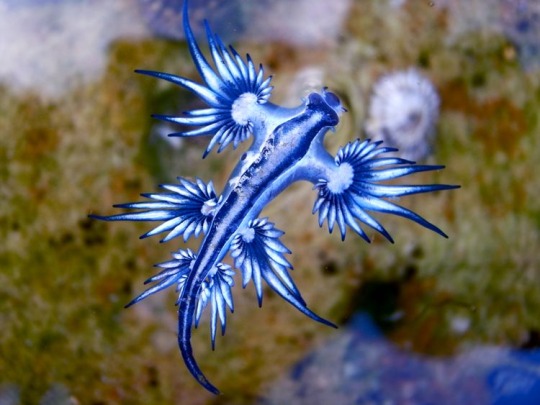

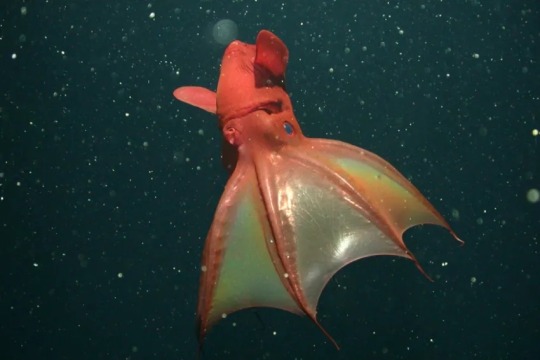
(Sources - 1, 2, 3, 4)
The second largest phylum, Mollusca contains over 76,000 living species and somewhere between 60,000 and 100,000 extinct species, including the ammonites and helcionelloids. Living groups include the chitons, solenogasters, caudofoveates, cephalopods (octopuses, squids, cuttlefish, nautiloids, etc.), scaphopods, gastropods (slugs and snails), and bivalves.
Molluscs are highly diverse, living on land, in freshwater, and in saltwater, where they comprise over 23% of all named marine organisms. The most diverse molluscs are the gastropods which comprise over 80% of known molluscs. Due to their high diversity, the only things most molluscs have in common are a soft body composed almost entirely of muscle, a mantle with a significant cavity used for breathing and excretion, the presence of a radula (bivalves excluded), and the structure of their nervous system.
Many molluscs are endangered due to collecting and killing individuals for their meat and/or decorative shells.

Propaganda under the cut:
Cephalopods are one of the (if not the) most neurologically advanced of all invertebrates and are capable of using tools, solving puzzles, and play.
Masters of camouflage, many cephalopods can change color, shape, and texture to hide from predators, sneak up on prey, and communicate with each other
The largest molluscs are the Giant Squid (Architeuthis dux), with 12–13 m (39–43 ft) long females and 10 m (33 ft) long males, and the Colossal Squid (Mesonychoteuthis hamiltoni) which is estimated between 10 m (33 ft) and 14 m (46 ft) long. The Giant Squid has much longer tentacles, but the Colossal Squid is heavier, reaching a mass of at least 495 kilograms (1,091 lb). The largest specimens of Colossal Squid, known only from beaks found in sperm whale stomachs, may perhaps weigh as much as 600–700 kg (1,300–1,500 lb).
Mollusc shells make up most of the “seashells” washed ashore, and are created by the animal via secretions of chitin and conchiolin from its mantle edge. Not all molluscs have shells (ex: nudibranchs) and for some, the shell is internal (ex: cuttlefish). Mollusc shells come in many beautiful colors, shapes, and sizes.
Most molluscs have eyes, and all have sensors to detect chemicals, vibrations, and touch. Of the phyla we have covered so far, their senses are the most developed.
Conchs can look at you like this:

(Source)
All cone snails are venomous, and some of the larger species are some of the most venomous animals in the world. Even though some species’ stings are fatal to humans, their sophisticated venom has saved lives through its use in neurological research.
Humans don’t just use mollusk meat and shells, but also luxuries like pearls, mother of pearl, Tyrian purple dye, and sea silk. As stated above, many species are now endangered due to human use, but some are farmed for their meat, pearls, and shells. The farming of bivalves is more ecologically-friendly than the farming of chordates as, rather than create waste, bivalves like mussels and oysters actually clean the water.
As filter-feeders, bivalves are natural water filters. A single 5.08 cm (2 inch) clam can filter up to 10-12 gallons of seawater a day. They can even filter microplastics out of polluted water.
The largest bivalve is the Giant Clam (Tridacna gigas) which can weigh over 200 kilograms (440 lb), measure as much as 120 cm (3.11 ft) across, and have an average lifespan in the wild of more than 100 years.
Cover your ears, kids. Terrestrial slugs, which are hermaphroditic, have some of the most intimate sex on the planet. A pair of slugs will suspend from a chord of mucus, heads down, and intertwine their bodies in a tight spiral. They will then evert their penuses and entwine them as well, exchanging sperm while hanging in midair. Slug porn, narrated by Sir David Attenborough, for your viewing pleasure.
#round 1#animal polls#we’ve reached my first personal favorite because cuttlefish are genuinely one of my all time favorite animals#mollusca
197 notes
·
View notes
Note
Trick or treat! 🦞
Hope you have room for a giant clam (Tridacna gigas)!

94 notes
·
View notes
Text
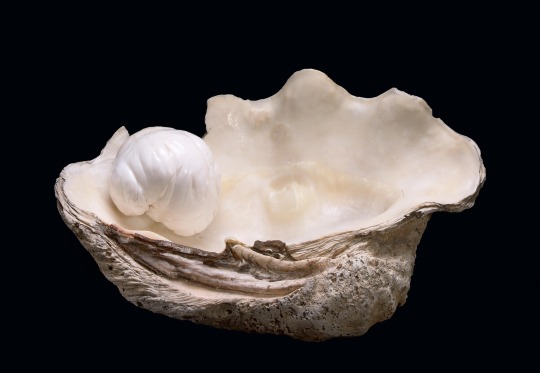
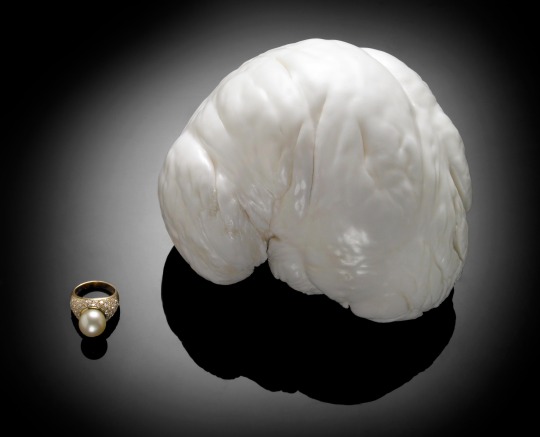
“Who wouldn't want an 11,339 carat milky white encephalon-shaped pearl? Bonhams & Butterfields of Los Angeles held an auction on Dec 6, 2009 for what is believed to be the world's second-largest pearl, a totally dead sexy five-pound calcareous concretion found off the coastal waters of the Philippines. The snowy-white pearl has been termed the ‘Palawan Princess’ and is the product of the giant clam shell Tridacna gigas.
The approximately 11,339-carat Palawan Princess was given an estimated value between $300-400,000 USD but unfortunately there were no buyers.”
111 notes
·
View notes
Text

Tridacna squamosa shell carved with a human head on the apex and two incised winged sphinxes in a register on the edge of the inner side; lotus buds and flowers in the space above the sphinxes with a band of hatched or plain triangles framed by parallel lines defining the inner edge of the field; assembled from fragments; the shell served as a container for eye-cosmetics.
Phoenician, 630 BC to 580 BC
80 notes
·
View notes
Note
🫵🫵🫵 You.
Tridacna clams, often known as "giant clams" (presumably because it is the clade that contains Tridacna gigas), get nutrients from both filter feeding with its siphon like other bivalves and having photosynthetic symbionts much like coral, their symbionts living in their enlarged and exposed mantle, recognizable as a "lip".

It takes a long time for them to reach a large size BUT they have been successfully aquacultured reducing the amount that are taken out of the wild
If i'm correct the ones in the aquarium trade are maxima, squamosa, and derasa, and crocea
13 notes
·
View notes
Text

My baby giant clam Clamabelle has fully extended her mantle today, after recovering from shipping. She's also adjusting her position to attain the most comfy spot.
Yesterday I had to keep fiddling with her placement because she kept yeeting herself off the platform. Once Tridacna clams find a spot they like they'll permanently attach but the young ones are rowdy. They clumsily move around until they get the combo of light, stability and flow they're looking for.
Moving around like this can sometimes result in disasters where they fall too far and hurt themselves or they end up upside down in the sand bed where they're starved for light and their fleshy bits are vulnerable to opportunists, so I hope she stays relatively in this spot.
Tridacnid clams are the largest clams on Earth and have independently evolved a symbiosis with dinoflagellates and obtain a lot of their calories from photosynthesis just like coral does. The rest of their food is obtained from filtering sea water for microbes, like you'd expect from a clam. They're gorgeous, weird animals.
Clamabelle is a Tridacna maxima, which has the hilarious common name of "small giant clam" because they "only" grow to a length of 8-12 inches (20-31 cm) as compared to the bigger species of the Tridacna genus, such as Tridacna gigas, the largest clam in the world:
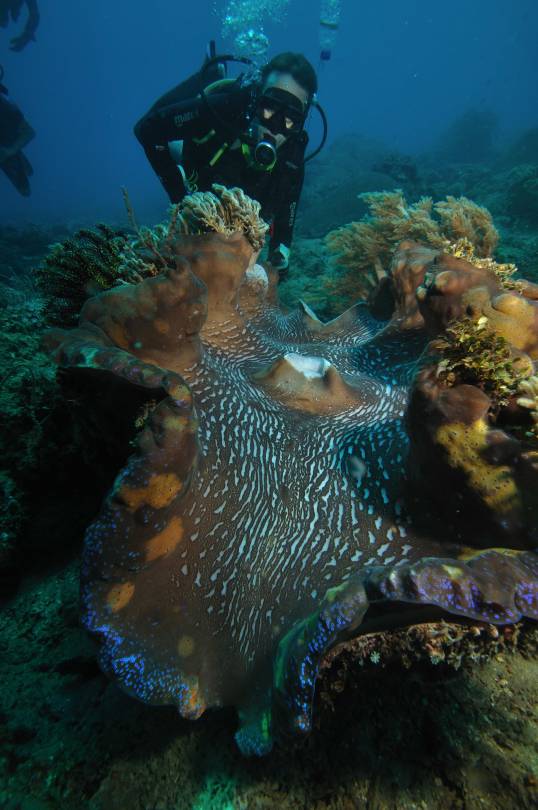
The smallest Tridacnid clam is Tridacna crocea, which "only" grows to a length of about 6 inches (15 cm). Tridacna crocea is also known as "the boring clam" but "boring" as in "cutting into rock" not "boring" as in "dull" because look at this little beast:
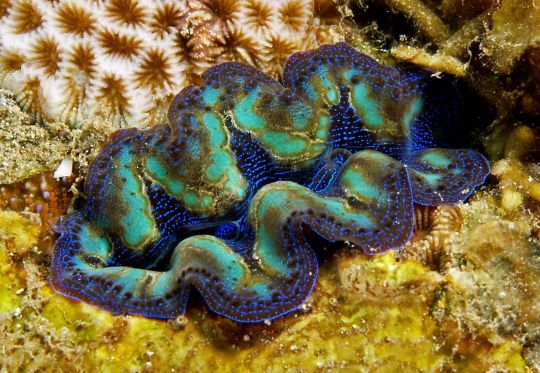
Really happy to have such an interesting specimen in my tank and I hope I can take good care of her.
18 notes
·
View notes
Note
Crossy, where can I read your Forgotten Stones AU?
You're not gonna believe this. I accidentally deleted my blog a while back so the specific post I used to link to on my vids got obliterated. Let me see how much I can recite from memory. Here are all the OCs
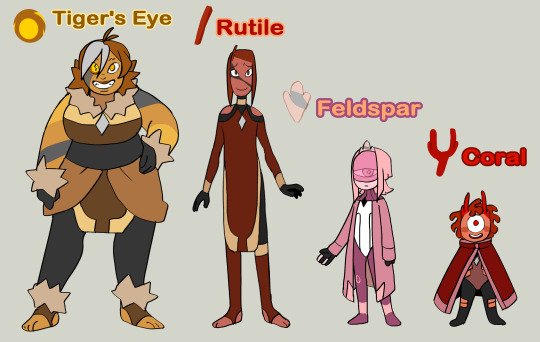

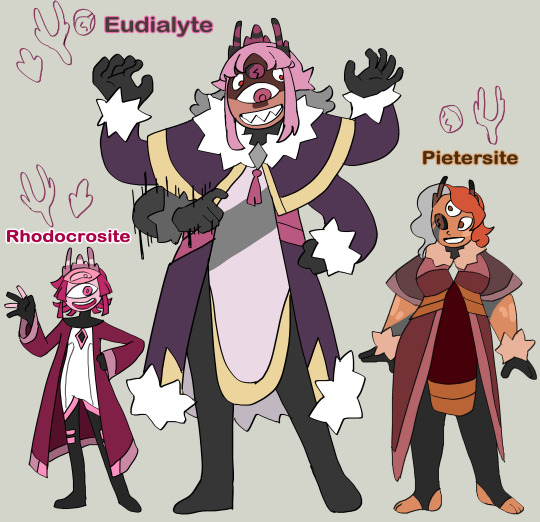
On one of Blue Diamond's planets, Pink Diamond was allowed to try out a Kindergarten. It went well, so she moved on to Earth while the process was supervised by a Peridot and her team of Feldspar, which are generic little starter kit gems that are impossible to fuck up and pad out personnel teams (Corals pad out Quartz crews.)
Then the apocalypse happened!
Rock-"eating" microbes has completely disrupted the function of gems, shattering every single gem on the planet, including the ones still in the Kindergarten. Feldspar is one of a generic gaggle of Feldspars, made the only survivor because in a fight to escape she accidentally took Peridot's place in an isolation chamber until the microbes stopped breaking down gems like that.
The planet was put under quarantine, and Feldspar had no choice but to spend the next few thousands of years figuring out a way to reverse the damage to repair shattered gems using what little Diamond Oil she has at her disposal.
Tiger's Eye and Rutile are her sole successes, and it's not perfect; they tend to glitch, and the more fusions happen, the worse the glitches get. In this AU, Rutiles don't fuse into anything, they're a type of equipment for other gems that have radar features and such, so while Rutile glitches too, she's the only one that doesn't cause problems during fusions.
Feldspar found Coral slightly deeper than most injections, allowing her to be the only survivor out of all the Kindergartens, but also making her malformed, so she has the mind of a child. Literally. She has almost no pre-programming and has to learn everything manually.
Without Homeworld roles or staff to help with certain tasks, Rutile has taken over the job of a Bismuth with construction, and Tiger's Eye has become Steve Irwin wrangling crocs and forcing Feldspar to learn to treat organic life in her spare time, which, in combination with Coral's lack of programming, inspires her to create Elkhorn and Tridacna.
Elkhorn Coral and Tridacna Pearl are Feldspar's test models for using more organic life to increase the amount of working Gems on the planet, but she has no idea they've emerged, or that the quarantine of the planet has allowed sapient life to develop. Elkhorn Coral lives in a fishing village and retrieved Tridacna when she emerged. So they are both just fishing several miles away.
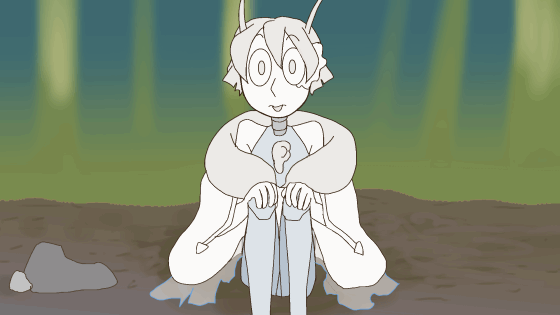
The Movie video I did is actually a secondary AU, "what if they were all successfully picked up and Feldspar became a Diamond bootlicker only to realize Coral is considered Off Colour and got shattered for it, and her creations will no doubt soon follow".
It's not in the video, but Pink Pearl is one of the antagonists! In my head she has a villain song that's functionally like It's Over Isn't It (Reprise). Rutiles don't fuse into new gems so she fuses and unfuses with dozens of them to vastly improve her range and mobility and it's Circque Du Soleil in the reception room. I was so obsessed with her she was my blorbo supreme
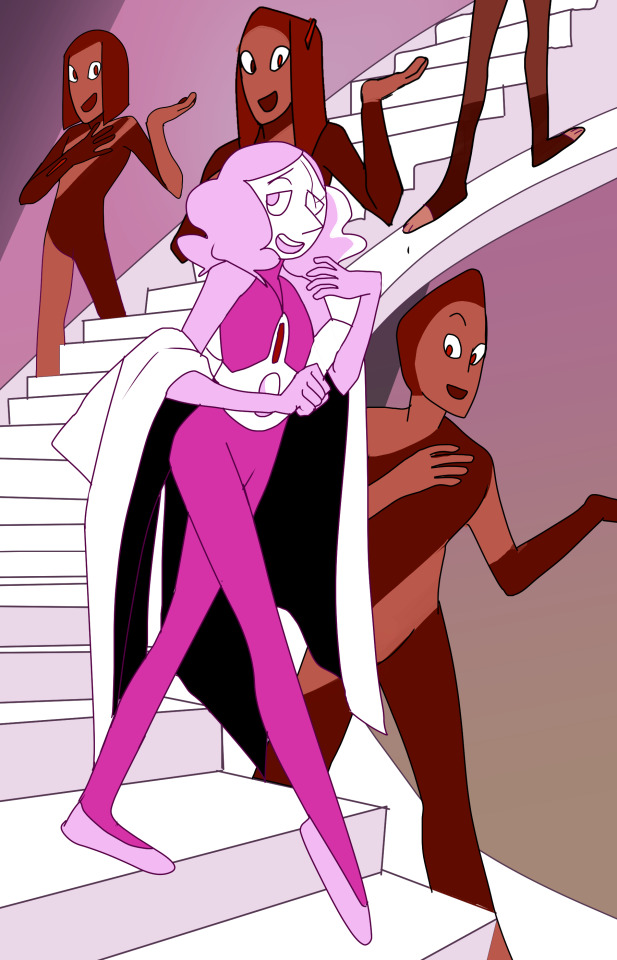
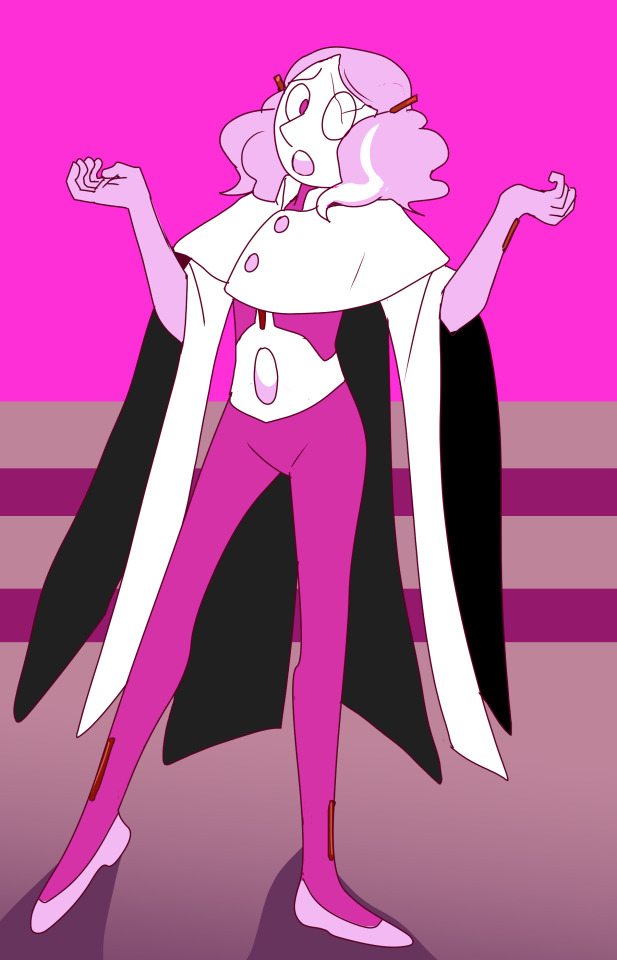
While the whole of this setting was written in Season 4 i think?? (Not the movie AU that was a direct reaction to the complete series) Feldspar and Coral also have Steven Universe Future designs! Set in the movie universe. While previous designs make it distinct that they have no inherent allegiance to any diamond, there's no call to a diamond at all in their new designs.
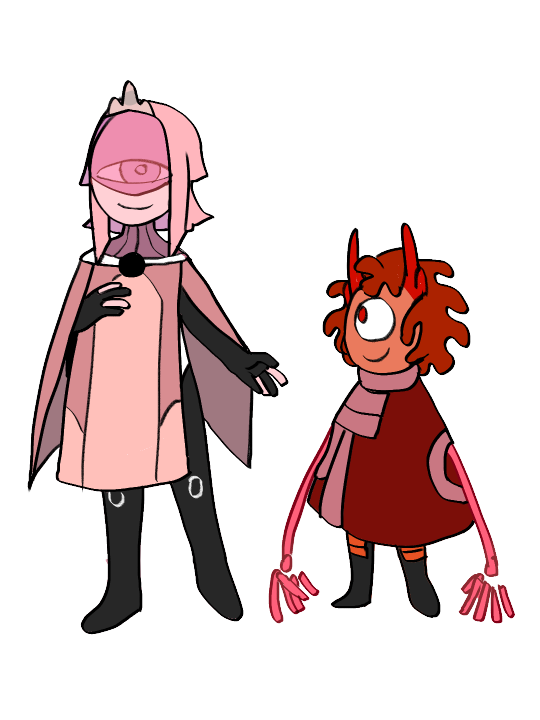

They have been exiled back to their home planet to live a happy life of science with a thriving gem colony that protects the planet's organic life. In the years she spent in Homeworld Coral has improved her ability to collect data so she's spiritually a 14-year-old. When Steven comes to her for advice about his emotional instability she says "I exploded into light, remember? Anyway have you tried raising a child." And Steven says "the child is why you exploded." And Feldspar says "No comment."
79 notes
·
View notes


